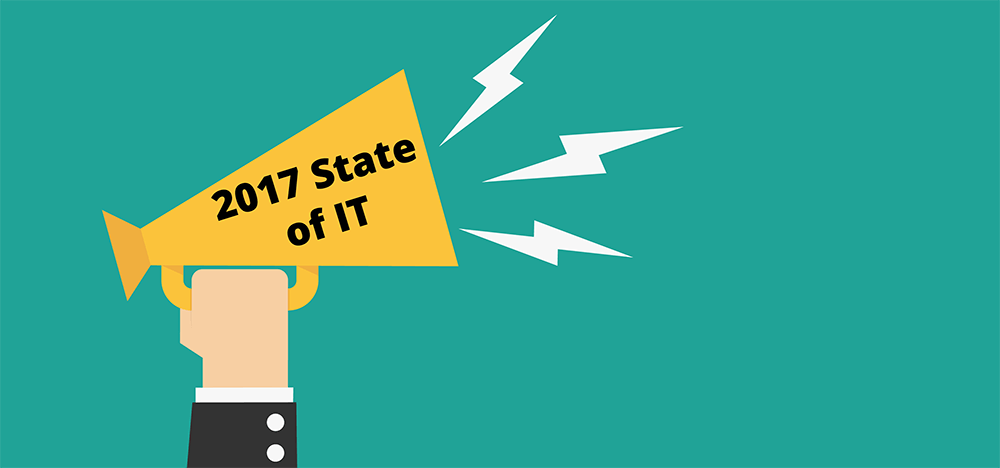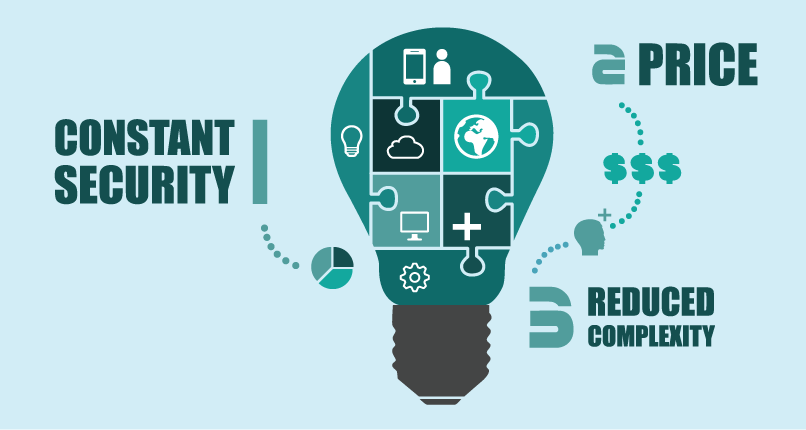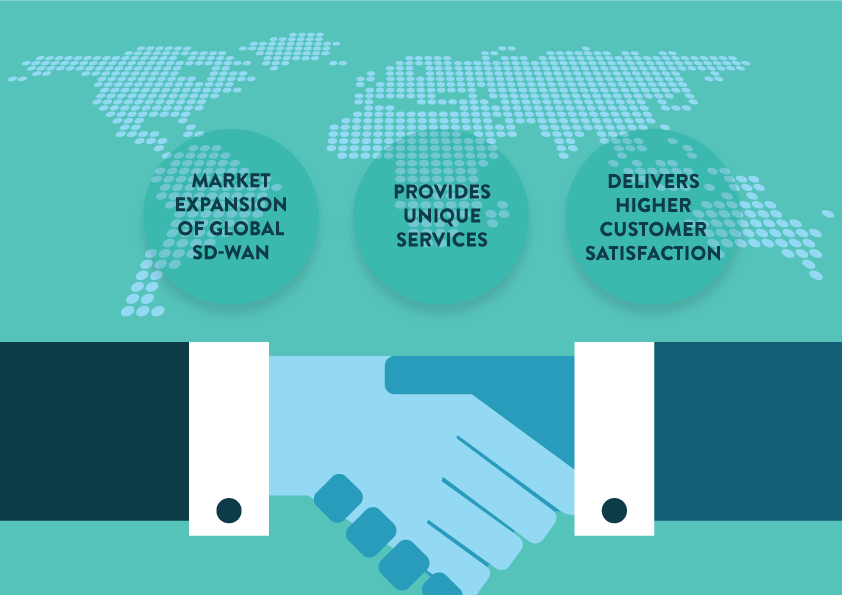5 Common Myths about CDNs that Clog your Content
Content Delivery Networks (CDNs) have been around since the late 90’s and are already a key component of IT strategy when it comes to video streaming, social media, and retail/e-commerce.
CDNs have certainly evolved from their beginnings in 1997. Traditional CDNs were built for a read-only web. They relied on centralized DNS servers combined with distributed caching techniques at the edge to take content closer to global end users. CDNs have done a phenomenal job of speeding the delivery of video and large files to the far reaches of the globe. As the adoption of web applications and related dynamic content needs grew, high-end CDNs started offering Dynamic Site Acceleration services through intelligent routing, TCP optimization and persistent connections. In fact, the majority of the revenue in the CDN market comes from media delivery and e-commerce – which is why customers from this segment get all the attention from CDNs.
Enterprises, however, have been late adopters of CDNs. That is quickly changing. In order to support an increasingly mobile workforce, enterprises have recently started putting a web front-end on enterprise applications (which were previously resident on-premise in datacenters and behind the firewall). Enterprises are realizing productivity benefits as well as higher end-user adoption rates through the use of web application acceleration services offered by a subset of CDN vendors.
CDN services, once restricted to a couple of vendors, are now available from over 40 players in the market. Each vendor brings a slightly different flavor of CDN and functionality to bear. This makes it a lot more difficult for the buyer to choose.
Further complicated matters is that not everything being said about CDNs is true. To help you navigate through the noise and confusion, here is our view on the top 5 myths about CDNs:
Myth # 1: All CDNs are the same.
The truth: This is only true (barely) for commoditized services from certain vendors.
The CDN market has become highly commoditized, so buyer decisions are often based on performance and price alone. While there is nothing wrong with those being the primary criteria for decision-making, there are a number of other factors that need to be considered, including, but not limited to, flexibility, customization capabilities, security, support and relevance. There is one or more CDN out there for each use case. The use case requirements vary among performance, asset delivery, volume, footprint and budget, to name a few.
Since traditional CDN vendors are laser focused on large content providers (streaming/video, social media,and retail/ecommerce), their network deployment models and global cache eviction policy favors popular content. Enterprise customers struggle with this model, and their static content often ends up getting flushed from cache, resulting in much longer load times for enterprise content, as it always has to be sourced from the origin server. And dynamic content doesn’t do much better because of the vagaries of the middle mile.
All CDNs are not the same. And a very small number truly understand or care about global enterprise content.
Myth # 2: A Bigger CDN is a Better CDN
The truth: This is a dated notion best left in the late 90’s!
It is not uncommon for CDN vendors to boast about the size of their networks in terms of number of servers or their POPs around the globe – even if a POP actually means 1 or 2 servers in a university basement. That’s a metric for slide ware and graphs, but the key question for savvy consumers of a CDN is: how much of that POP footprint (and those servers) is guaranteed to be available for a customer’s content?
Current best practices in the CDN space seem to suggest that newer vendors today can do just as well, with a smaller POP footprint in strategic locations with a higher focus on the optimization software stack – this evolution is because of better acceleration technology, improved broadband speeds and better networks and reliability within local regions.
Customers that subscribe to legacy CDN services do not get full access to the deployed network and end up getting served by a few POPs or a reduced region; both, for technical and economic reasons.
Moreover, when it comes to dynamic delivery, “bigger” is not an advantage at all! What matters is the quality of the end to end connectivity and the optimization software stack.
Myth # 3: There are at least 10 CDNs doing true dynamic content delivery.
The truth: This is false and further questions for details from vendors will bring out the devil in those details.
Industry analysts consider dynamic delivery to be the future of the CDN market. There is no shortage of CDN vendors who claim capabilities for whole site delivery and dynamic web application acceleration.
However, most solutions in the marketplace offer either copycats made to look like the real thing or a piecemeal solution – either low TTL (time to live) settings, which force most requests to go back to the origin, TCP optimization from the origin out to the edge or persistent connections or both. In fact, content with a short TTL is NOT dynamic content at all – true dynamic content is not cacheable ever.
The true judge of character of true Dynamic Content Delivery is the middle mile, its intelligence and its functionality. This functionality must include middle-mile network quality, either using a private network or routing techniques that bypass Internet congestion. It must also have the proper intelligence, including TCP optimization at each segment of the network, persistent connections, and end-to-end visibility.
Myth # 4: CDNs are neither necessary, nor helpful, for enterprise web resources.
The truth: Times are changing, and enterprises are getting on board.
Video, social media and e-commerce companies have all unanimously agreed on the inevitability of using CDNs, and if they become big enough, of building their own CDNs. However, enterprises are still in doubt and for good reason.
A one-second page delay could cause you a 7% loss in sales – in the case of Amazon, that would work out to around $1.6 billion! Now that’s a great metric to drive an ecommerce company into the arms of a large-scale CDN.
Sales conversion rates are not all that important to some corporate websites. However, end user engagement and customer satisfaction is key and even though the volume is not there, each user coming to an enterprise website is a premium user and is moving towards a buying decision of their own. Furthermore as customer portals, supplier logins, CRM, ERP and Business Intelligence platforms are being deployed with web-based UIs, application performance becomes critical since it directly impacts productivity and adoption rates of those applications. The web application acceleration offerings of a few CDN vendors are critical in these cases, especially as the user base expands globally and corporate mobility with application performance is a KPI for enterprise application teams and the CIO.
Myth # 5: CDNs are about price alone or performance alone.
The truth: Price and performance are definitely important, but modern CDNs can do much more with less, while also boosting performance for difficult content and delivering better ROI for premium content.
Beyond the straightforward comparison on network characteristics and footprint, modern CDNs have flexibility and customization capabilities built-in to deliver a highly personalized end-user experience. Several use cases such as geo-targeting (serving tailored content to specific geographies), device detection (serving mobile responsive websites to smaller screen devices), personalized content delivery and more are key value adds to the solution. Do not base your decision purely on the lowest price or the best performance,but rather ensure you allocate adequate points for flexibility of the solution you intend to deploy.
The bottom line for this blog and its intent is to empower you to make the best choice for your CDN platform. And if you’re an enterprise, that list of possible vendors is quite short.
What if you had an option of trying out a CDN offering built for the enterprise? A private core network combined with multi-segment TCP optimization, compression and persistent connections technology that accelerates your static as well as dynamic web resources/applications with instant deployment, zero capital expenditure, domain- and network-level visibility and monitoring with 24×7 support included? And what if the same platform could help you accelerate all your applications – on-premises, web applications, cloud services, outsourced teams, mobile workers and more, all with integrated visibility?
Well, you can. Sign up for a free trial with Aryaka. We’re betting you’ll like what you see and probably never leave –just like 95% of our customers, who tried us out for the technology differentiators and performance, and stayed for the service and support. Give us a try. You’ll be glad you did.
– Sonal










